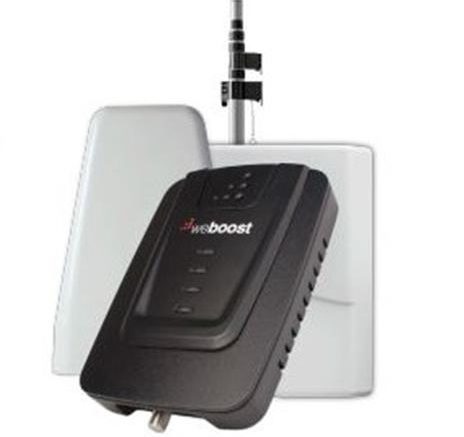We all want to be futureproof. If you’ve been enjoying the tech world long enough, you’ve been stung by the future at one point or another. You’ve bought something you thought was the latest and greatest, only to toss it a year later because it’s missing some critical feature. Many people remember dishing out $20,000 for a new TV in the early 2000s without HDMI or an ATSC tuner. As I said, we’ve all been there.
If you’re looking for a cell booster today, you’re probably worried about futureproofing. 5G cellular is starting to roll out all over the country, and I’m sure that fits into your plans. You’re looking at the purchase of a cell booster that could last a decade or more and you’re hoping that your purchase won’t be obsolete in 10 months. I’m here to tell you, there’s good news and bad news.
First, the bad
There aren’t any 5G cell boosters out there. There aren’t even any plans for them. The FCC needs to change its rules to work with 5G and they haven’t done this. This is somewhat complicated because some of the frequencies used for 5G in the future are used for TV today, and that’s a completely different level of regulation. For that reason, you should not expect to see any 5G cell booster regulations until late 2020 at the earliest. This places actual 5G boosters in your hands in early ’22 if I had to take a guess.
So, there’s no way to buy a booster today and have it work in the 5G ranges. But the news isn’t all bad.
Now, the good
5G may be the new hotness, but all the other “G’s” aren’t going away tomorrow. Eventually you’ll see pretty much all data move over to 5G, and even a large portion of voice traffic. However, the bands that make up 4G/LTE boosters will still be with us for a long time to come. They’ll still be used by older and newer phones and they’ll still make a lot of sense to support. Today’s cell boosters cover the five major ranges in use today for voice, 3G data, and 4G/LTE data. That isn’t going to stop just because you get a 5G phone.
Your voice calls will still travel over either the PCS/Cellular bands or possibly over the LTE bands for the short term. As 5G rolls out, it’s going to be for data only to start. There just isn’t a need to move voice over to the 5G spectrum yet. A cell booster will still help you get great voice service.
The rollout of 5G service is expected to be slow, especially for folks in spotty coverage areas who need a cell booster. 5G will require more towers and more power. This will take time to implement. Just like with 4G/LTE, you’ll probably see carriers putting up towers in high density areas first where they can get the most bang for the buck.
Which booster to buy?
If you take a look at the great selection of cellular signal boosters at Solid Signal, you’ll realize there are no bad choices. At this point you do want to choose a 4G/LTE booster, sometimes called a 5-band booster. Choosing a 3G-only booster seems a little bit behind the times. You’re trying to stay ahead of the curve, that’s why you read this article. But once you find the booster that works for your location, you’ll be able to feel good that even with 5G coming, you’re still making a good choice.
If you don’t know which booster to buy, why not try getting a free recommendation from our techs? They’ll look through our whole catalog after asking just a few questions. They’ll get you the booster you need. Start by filling out the form here.





